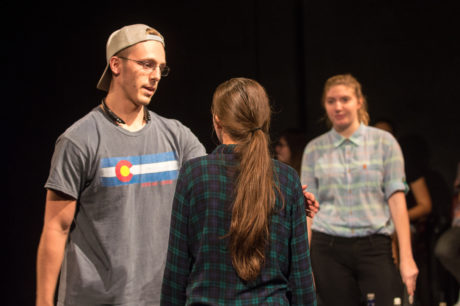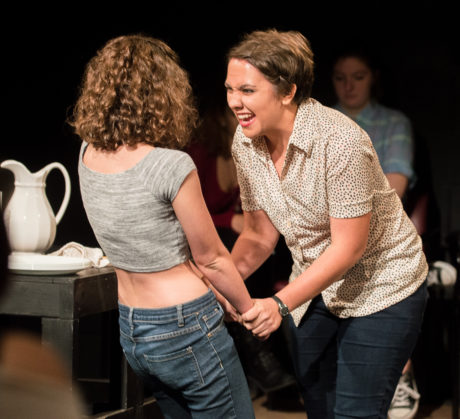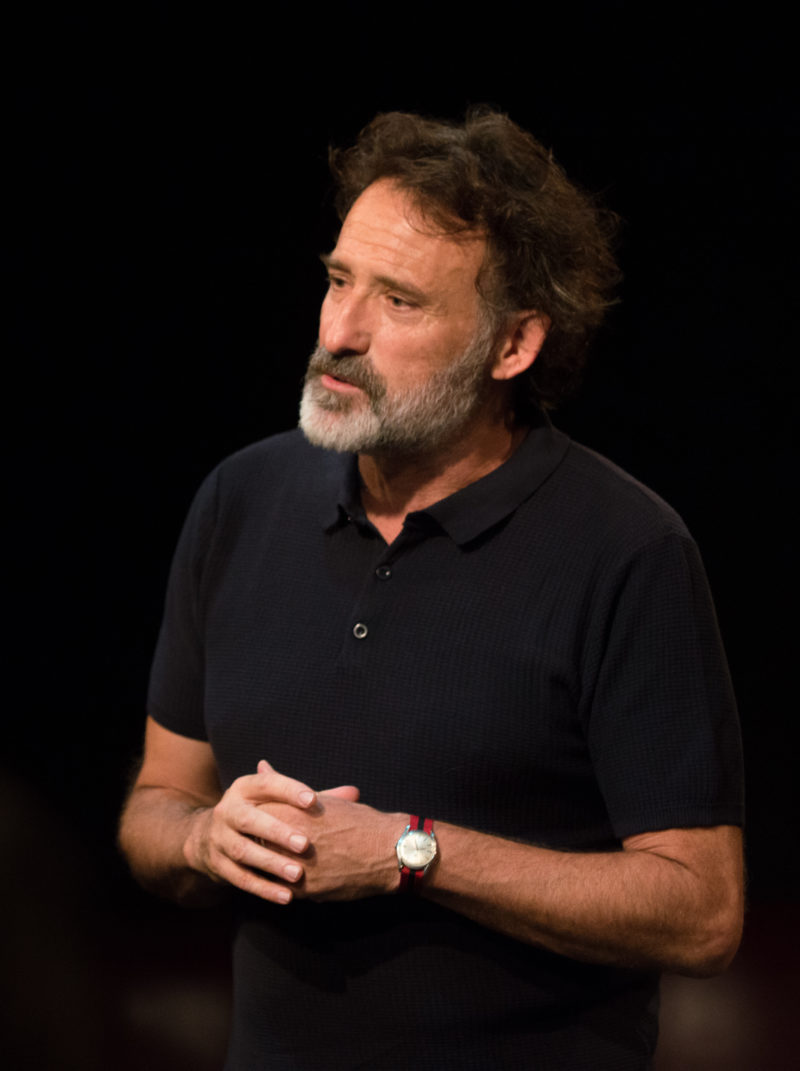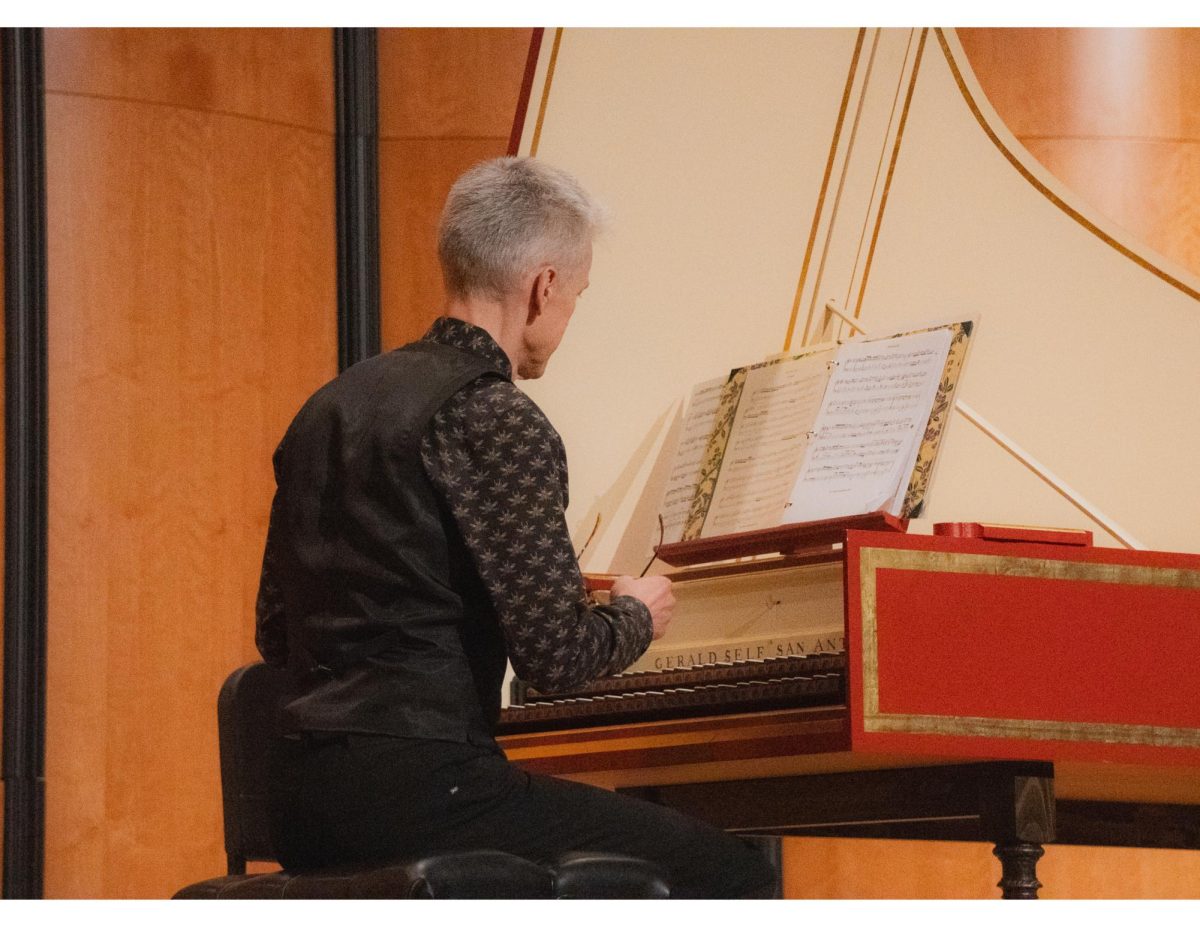While I was walking to the Ruth Taylor Theatre building to see “Theatre for Social Change: On Domestic Abuse,” I was nervous. While I knew the production had a purpose and a message that was important, I was worried it would be too depressing and too emotional to enjoy and that it would drag due to its content. Turns out that I was very happily wrong.
Due to the wonderful cast’s performance, with each of them capturing a different aspect of the many types of people involved in domestic violence, the production flowed well and was a fantastic learning experience. Director Roberto Prestigiacomo did a great job of putting the right people in the right roles, with each of the leads providing strong, grounded performances. While not everyone had as many lines as the leads, supporting actors did a good job of adding to the scenes.
The production itself was split up into two episodes, and each had three parts. The first part of an episode was a monologue “” a long speech that explained the background of the upcoming scene. Then the scene was played out, which depicted the grim reality of domestic violence and its depressing repercussions. When the scene was over, the director would then talk to the audience, giving them a role in the production.
The third part is what made this production unique. The audience had the opportunity to intervene into the scene as it was played out again by replacing one of the characters, besides the two leads, and then trying to fix the situation. At first the audience was hesitant, not knowing when to butt in or to interject. But, after the first audience member attempted separating the couple, everyone wanted to jump in and change the dynamic.

This type of show, one where the audience is active and engaged in the actual show, is meant to teach the audience. Theatre for Social Change is meant to bring change and awareness to difficult topic, and in this case it was focused on domestic violence. The incredible thing the cast and crew did here was to create a unique environment to learn how to intervene, to try different techniques and to become aware of the problem. By allowing the audience to become a part of the show, they are teaching in hopes that this new knowledge is applied in real world situations.
While I was working on the show “Good Kids” last year, the cast and I did similar exercises to learn about rape culture and different methods of dealing with it. We mainly focused on how to help someone who had been raped, how to help them get the right help and to try and be as supportive and as patient as possible. It was a great, albeit very brutal experience and it definitely made me and the cast of “Good Kids” more aware of the show’s purpose.

The cast of “Theatre for Social Change: On Domestic Abuse” had the difficult task of producing a realistic depiction of domestic violence, from the oppressor to the victim to the bystanders. Each had to believe in the role they had and give a truthful rendition. While the victim is a difficult role to portray, the role of the oppressor has to make the audience believe things they themselves they don’t believe. Each cast member did a great job, showcasing the new and old talent that Trinity’s theatre department has to offer.
Watching and being a part of this show was an unforgettable experience. While I did enjoy watching some of my fellow audience members do their best to add as much comedy to the scene as possible, I also was moved to see people jump in and try to help the victim and protect them from the oppressor. As the cast said when I interviewed them a couple weeks ago, the purpose of the show is to give people the chance to intervene in the hopes that they will do the same in real life. The show did just that, and I hope that more people will go and learn from the show as much this audience did.
Do not be dissuaded by the subject matter; “Theatre for Social Change: On Domestic Abuse” is an enjoyable experience that you will come out of having learned how to be a better person. Who can ask for a better night than that?







